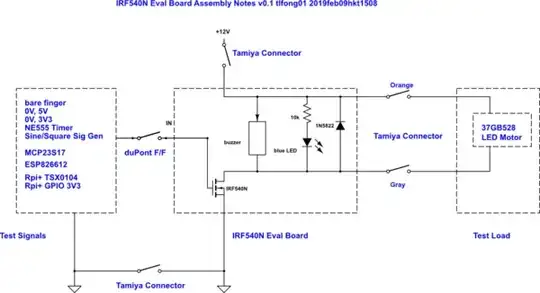I am using the power MOSFET IRF504N. I am not sure if my Rpi's GPIO 3V3 signal can directly input to the gate of the MOSFET which requires 4V minimum.
I guess that I don't need a gate driver to shift up the Rpi's 3V3 signal. So I am now experimenting, ...
I read the IRF540N datasheet which says Vgs(th) is 2V minimum and 4V maximum. Does it mean Vgs between 2V to 4V won't guarantee anything?
I forgot to mention that the motor is DC12V 100mA (37GB528-70 70rpm). And I also want to drive another solenoid valve DC12V 300mA (FDZ-5). The picture below shows the two little guys.
Motor and Solenoid Valve Picture

simulate this circuit – Schematic created using CircuitLab
